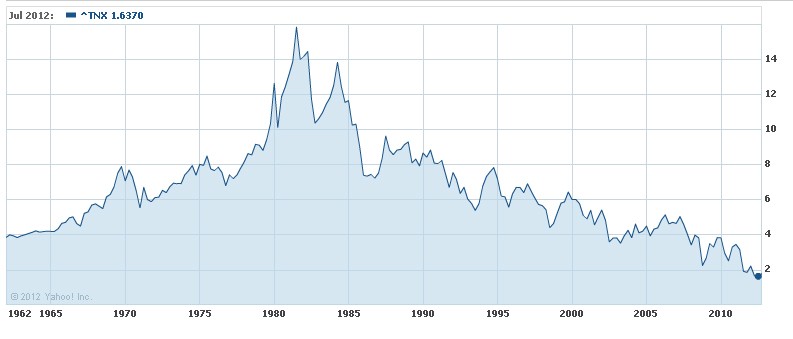Bond Yield and Portfolio Management Understanding Yield
Post on: 4 Февраль, 2017 No Comment

Bond yield is an evaluation of the potential return an investor can receive on a bond.
Bond Yield and Portfolio Management
Bond yield is related to portfolio management in that it is an important item to consider when managing investments. To determine the potential yield on a bond, investment managers can use a number of different portfolio management techniques.
Ways to Predict Bond Yield
Option-Adjusted Spread
Option-Adjusted Spread (OAS) techniques value a bond’s cash flows using a theoretical yield curve. attaching probabilities to future interest rate movements. This gives a probability-based value to a bond, usually quite different than traditional “yield-to-maturity” and industry “rule-of thumb” formulas. This technique is especially useful for callable and extendible/retractable bonds, whose cash flows depend on future interest rates, or are said to be “path dependent.”
Short Term Trading and Bond “Swaps”
Short-term trading techniques use quantitative and technical analysis to establish overvalued and undervalued bonds and, by extension, the potential bond yield.
- Traditional bond trading and “swapping” seeks to find undervalued securities through examination of historical relationships and patterns. If supply considerations, such as a new issue, have caused yields to be high relative to historical norms for a particular retail company compared to comparable credits, a bond manager would sell the more expensive retail bond and buy the cheaper one compared to the historical relationship between them. This can apply to government bonds as well. A manager might look at the historical price and yield differentials or “yield spread” and “price spread” between two similar Treasury Bonds. sell the one that is relatively expensive, and buy the cheaper one. Bond managers call this “taking out” dollars of price spread or “picking up yield.”
- “Rich/Cheap” analysis references bonds to a peer group of bonds. For example, a plot of all bonds against a theoretical (usually zero coupon) yield curve show “rich” (overvalued) bonds with lower yields than bonds of similar credit and term, or “cheap” (undervalued) bonds with higher yields than bonds of similar credit and term.
Long-Term Credit Analysis
Credit analysis is longer-term security selection, focusing on the fundamentals of a bond. These include a credit assessment of the bond issuer and the specific features of the security or issue. Where a trader might make a short-term “swap” based on a higher yield for a bond than its peers, the credit analyst focuses on longer-term issues. For example, although the current ratings of a bond might be appropriate, the credit analyst might have an insight into the prospects of the issuer that suggests credit fundamentals are improving. This could be based on a few things:
- the issuer’s business conditions and operations are in an improving trend;
- the economy and other macroeconomic factors are likely to benefit the issuer; and/or
- the underlying security or cash flows of the specific issue are stronger than the market perceives, i.e. the shopping centre which forms the security for the issue is worth far more than the outstanding bonds.
The Importance of Bond Yield
While not necessarily the most important factor to consider when investing in bonds, bond yield and portfolio management are integral to maximizing the return of a portfolio. If an investment manager can consider the yield of particular investments, they can easily determine the investment with the highest potential for the maximum return.














